The materials used in interior design nowadays have fewer limitations compared to before. There are various styles of flooring, such as different types of floorboards and wooden floors, as well as options for wall materials like stone, wall tiles, wallpaper, and wood veneer. The emergence of new materials has made it easier to achieve great designs.
Different materials have different effects and can create different spatial textures. Let's take wood veneer as an example. There are natural and artificial types, but what are the differences between them and how are they applied?
Wood veneer board complete production process
2.Melamine Board VS Natural Veneer Board
As mentioned earlier, "wood veneer board = veneer + substrate board", taking into account for further protection of the resources of the original wood and reduce the cost of wood veneer. Many merchants began to try to imitate the natural wood veneer texture by artificial means, but also improve the performance of the "veneer", which appeared the so-called technology veneer , impregnated film paper and other artificial wood veneer.
(1)Natural Veneer Board
Advantages:
- Authentic appearance: Natural veneer panels showcase the beauty and natural grain patterns of real wood, providing an elegant and luxurious look.
- Variety: They come in a wide range of wood species, allowing for numerous design options.
- Durability: Veneer panels are generally sturdy and can withstand regular wear and tear when properly maintained.
- Repairability: Damaged areas can be sanded down, refinished, or repaired relatively easily.
Disadvantages:
- Cost: Natural veneer wood paneling tends to be more expensive compared to other alternatives due to the use of real wood.
- Limited moisture resistance: Wood veneers are susceptible to water damage and may require additional sealing or protection in moisture-prone environments.
- Maintenance: They may require periodic maintenance such as polishing and refinishing to maintain their appearance and durability.
(2)Melamine Boards
Advantages:
- Affordability: Melamine boards are generally more cost-effective compared to natural veneer wood paneling.
- Wide range of designs: They are available in various colors, patterns, and textures, providing versatility in design options.
- Moisture resistance: Melamine boards have good resistance to moisture, making them suitable for humid areas like kitchens and bathrooms.
- Low maintenance: They are relatively easy to clean and require minimal maintenance.
Disadvantages:
- Artificial appearance: Although melamine boards can mimic the look of wood, they lack the authenticity and natural beauty of real wood veneers.
- Limited repairability: If a melamine board is damaged, it can be challenging to repair or refinish the surface.
- Durability: While melamine boards are generally durable, they may be more prone to chipping or scratching compared to natural veneer wood paneling.

What is the production process of natural wood veneer?
The general process of wood veneer board production is as follows:
timber processing -> veneer production -> Veneer pasting &pressing -> surface treatment.
1.Timber Processing
The raw timber is processed through a series of steps, including steaming, squaring, and debarking etc.

2.Wood Veneer Production
There are four methods for producing wood veneer, which can be divided into tangential slicing, radial slicing, rotary cutting, and quarter slicing.
(1) Plain Slicing/Flat cut:
Also known as flat slicing or plain slicing, tangential slicing refers to slicing the wood along parallel lines to the center of the log. The outermost layer of growth rings in tangentially sliced veneer forms a cathedral-like grain pattern.
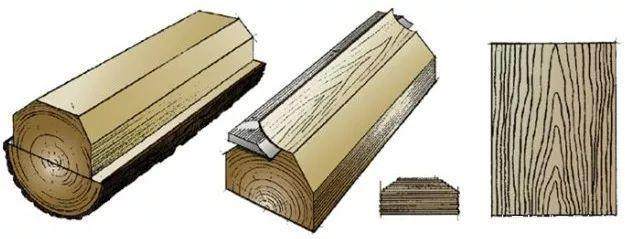
(2) Rotary Cutting:
The log is mounted in the center of a lathe, and the slicing blade is inserted into the log at a slight angle. By rotating the log against the blade, rotary-cut veneer is produced.
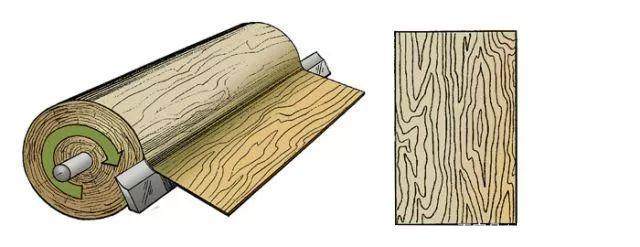
(3) Quarter Slicing:
Radial slicing involves cutting the wood perpendicular to the growth rings of the log, resulting in veneer with straight grain patterns.
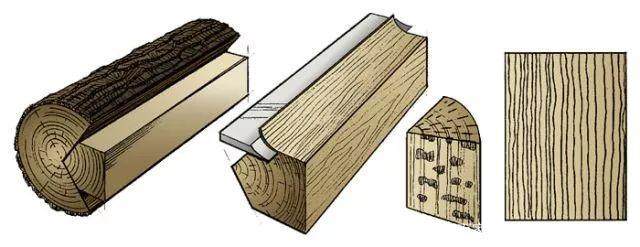
(4) Lengthwise Slicing:
In quarter slicing, the flat-sawn boards are passed through a fixed slicing blade from the bottom, producing veneer with a varied vertical grain pattern.
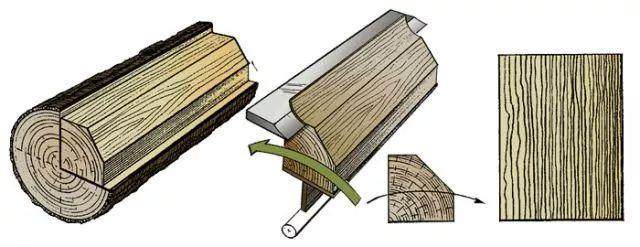
3.Veneer Pasting
(1) Gluing:
Before applying the veneer, it is necessary to prepare glue that matches the color of the wood veneer to prevent significant color discrepancy that could affect the overall appearance of the panel. Then, the substrate board is placed in the machine, glued and then the wood veneer is pasted.
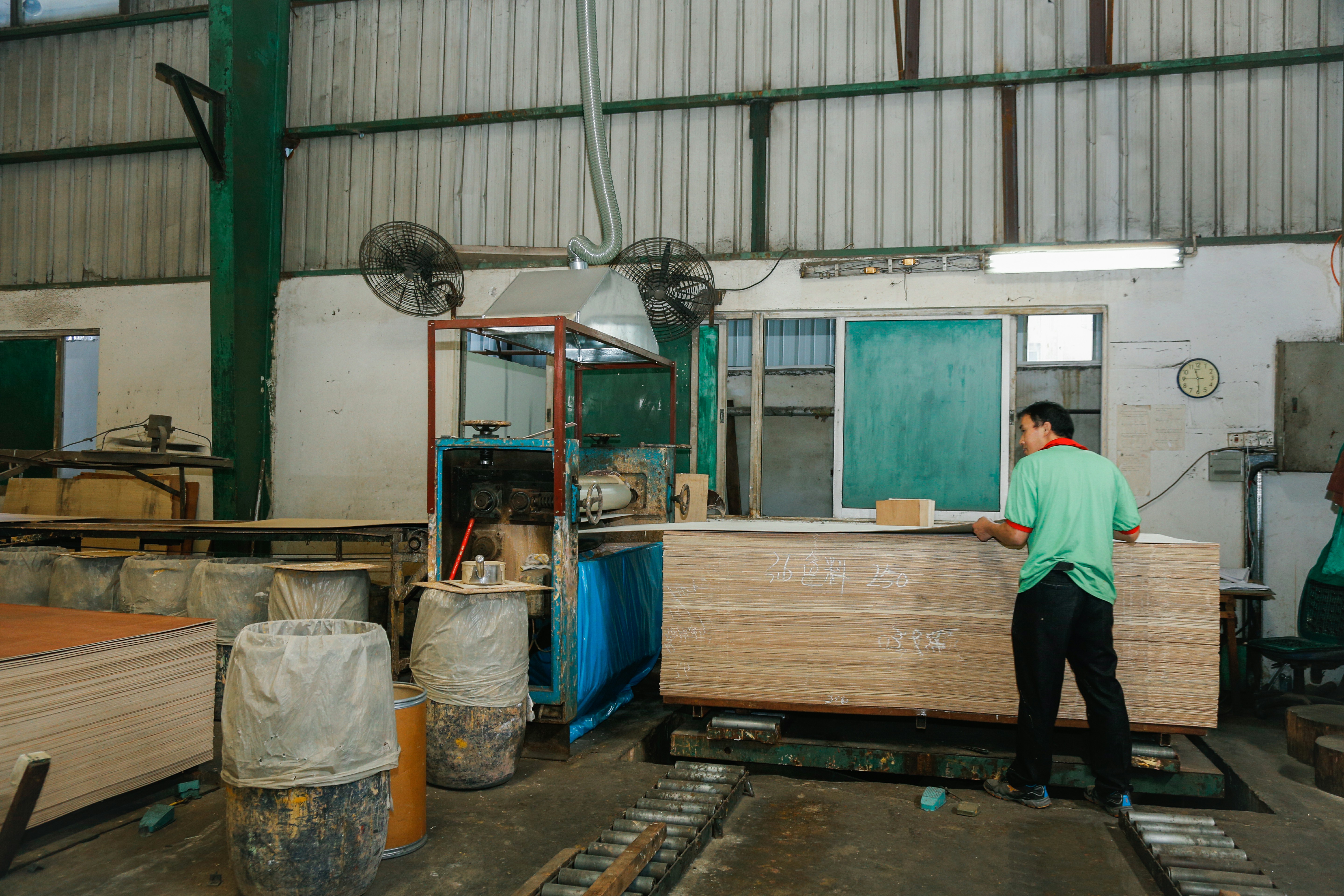
(2) Hot Pressing:
Based on the type of wood veneer, a corresponding temperature is set for the hot pressing process.
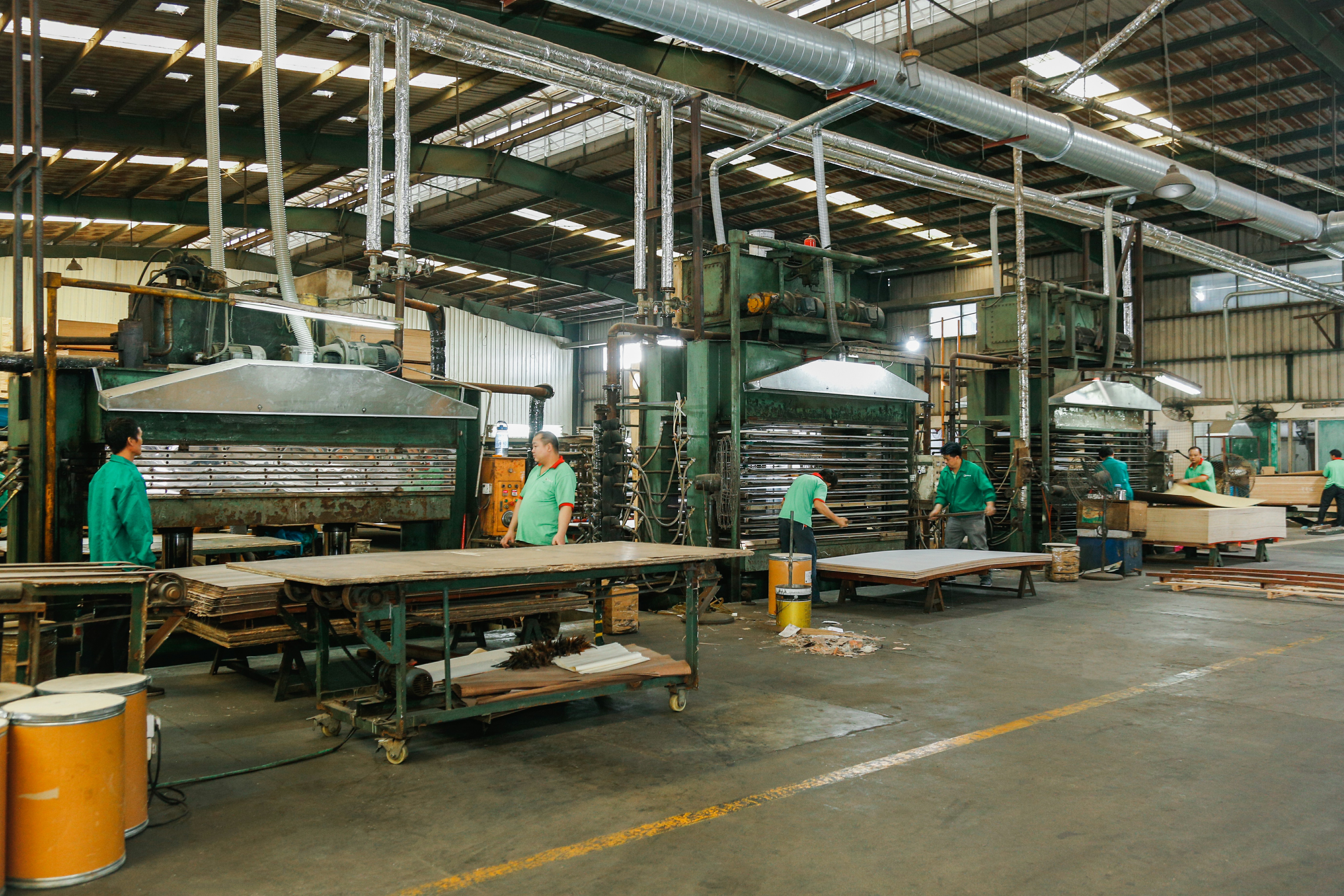
4.surface treatment
(1) Sanding:
Sanding is the process of grinding the surface of the board to make it smooth and polished. Sanding helps to remove surface irregularities and imperfections, enhancing the overall texture and feel of the board.
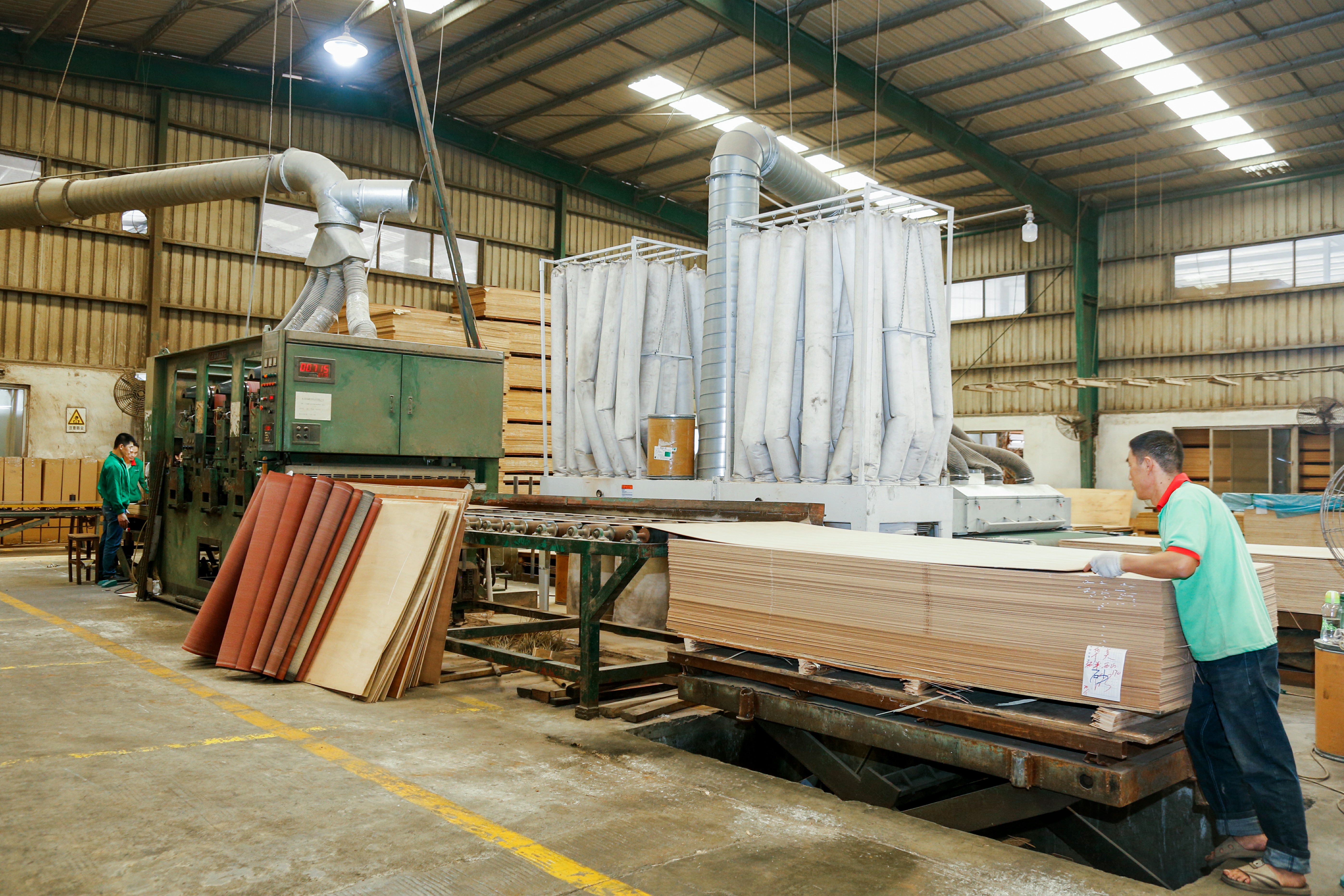
(2) Brushing:
The purpose of brushing is to create a linear texture on the surface of the board. This treatment adds texture and decorative effects to the board, giving it a unique appearance.
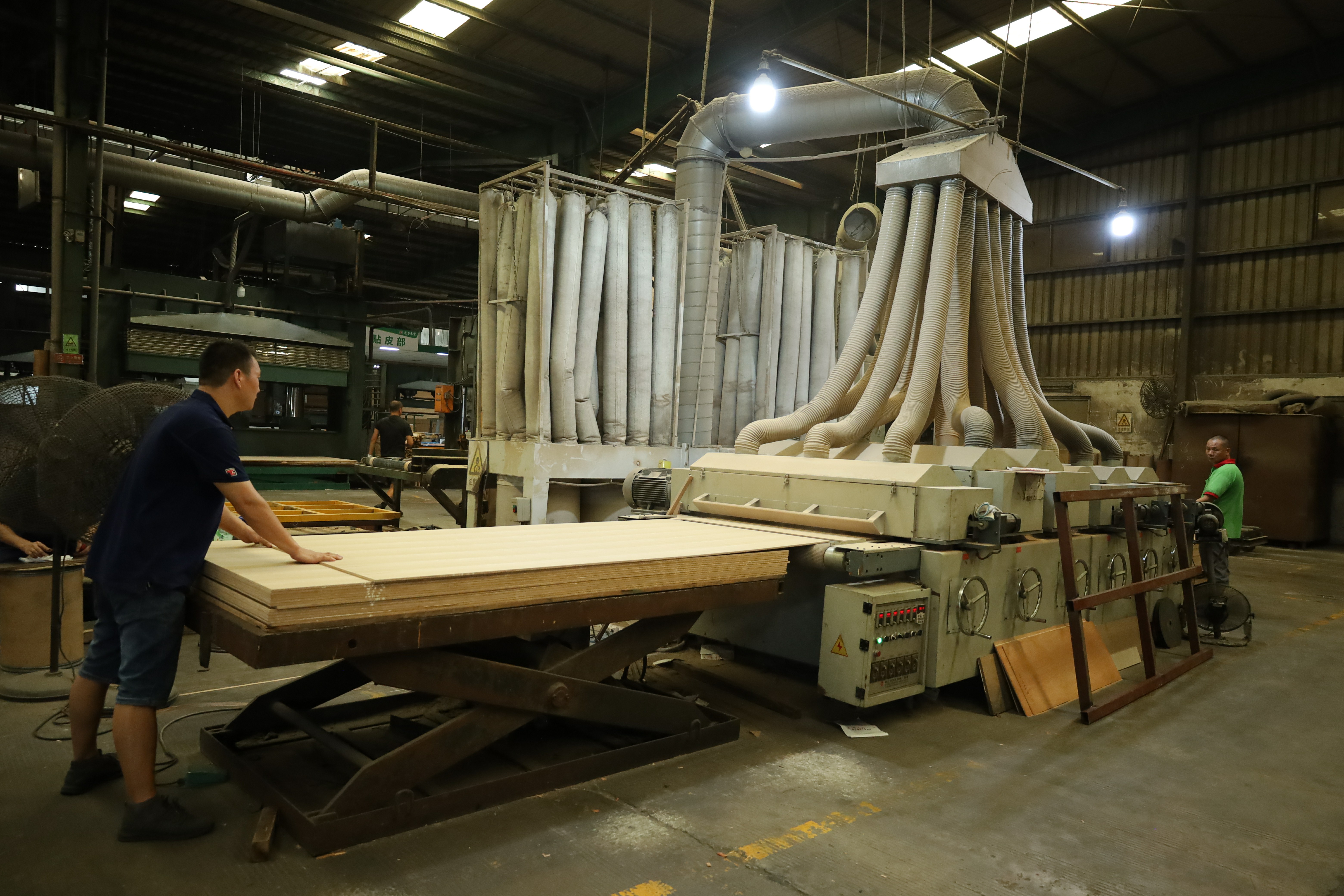
(3) Painting/UV Coating:
This treatment provides functions such as waterproofing, stain resistance, and scratch resistance. It can also change the color, glossiness, and texture of the board, increasing its visual appeal and durability.
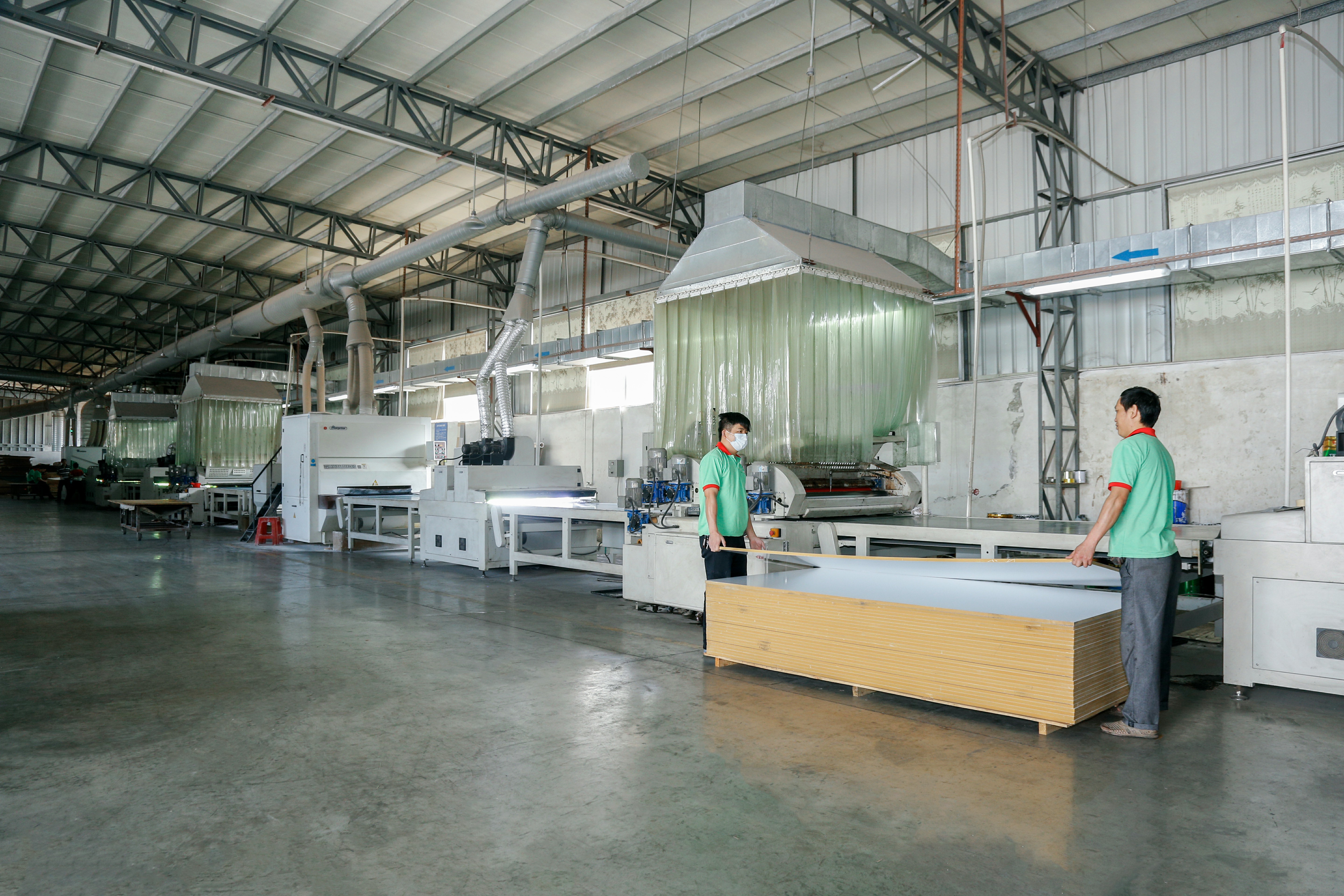
In the end
In summary, the production process of natural wood veneer involves cutting methods such as tangential slicing, radial slicing, rotary cutting, and quarter slicing. These methods result in veneer with different grain patterns and appearances. The veneer is then applied to the substrate board using glue and subjected to hot pressing.
When comparing natural wood veneer to artificial veneer, there are distinct differences. Natural wood veneer is made from real wood, preserving the unique characteristics and beauty of the timber species. It showcases the natural variations in color, grain pattern, and texture, providing an authentic and organic look. On the other hand, artificial veneer, also known as engineered or synthetic veneer, is manufactured using materials like paper, vinyl, or composite wood. It often mimics the appearance of real wood but lacks the genuine qualities and natural variations found in natural wood veneer.
Choosing between natural wood veneer and artificial veneer depends on personal preferences. Natural wood veneer offers a timeless and traditional appeal, highlighting the natural beauty of wood. It is favored for its authenticity, warmth, and ability to age gracefully. Artificial veneer, on the other hand, may offer a wider range of design options, including consistent patterns and colors.
Ultimately, both types of veneer have their own merits and applications in various industries, such as furniture manufacturing, interior design, and architectural projects. The choice between natural wood veneer and artificial veneer ultimately comes down to the desired aesthetic, budget considerations, and specific project requirements.
Post time: Sep-21-2023








